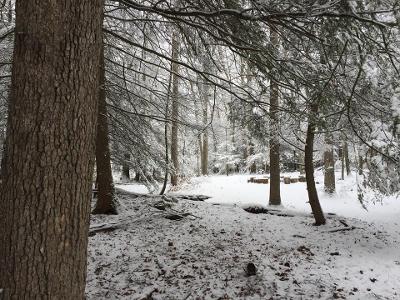Thuja occidentalis also known as the northern white cedar tree was a favorite of the Algonquians and other Native American communities. The Algonquian community considered this tree indispensable. It was used in many different ways that included everything from the construction of canoes and religious ceremonies to relief from the common cold. The Ojibwa considered this tree to be one of the most sacred and honored plants on earth.
About the Northern White Cedar
This slow-growing tree is native to eastern North America including Connecticut and flourishes along the swamps, lakes, and ponds of the forests between Nova Scotia and the Great Lakes, and, south to the mountains of Georgia. This tree can live up to 800 years and reach a height of 100 feet. The bark of this tree that is in the cypress family is soft with shallow grooves that run vertically on the trunk. The bark is reddish-brown in color and tinged with orange. The aromatic branches are fan-like and have scaly leaves that grow in flat sprays. The seed cones are slender and when young they are yellow-green and ripen to brown as they age with six to eight overlapping scales that contain about eight seeds. The heartwood of the cedar is aromatic, durable, and water-resistant.
Medicinal Uses
The Algonquian people primarily used the cedar tree for its mild analgesic properties and aromatic oil to cure a multitude of illnesses. The Abnaki made a poultice of the leaves and used it for swellings; they also made pillows from cedar leaves to generate vitality and to prevent illness. The Algonquin, Quebec made a poultice of powered rotten wood and used it to treat rashes, and, branches were used in a steam bath to treat fevers and colds. An infusion of the plant was taken for menstrual disorders and an infusion of cones was used to treat babies with colic. A decoction of crushed branches was used as steam to relieve toothaches. The Chippewa made a compound of cedar charcoal and would put this mixture under the skin of the temples to treat a bad headache. They also burned twigs to disinfect a house for smallpox. The Woodland Cree used a decoction of needle-covered branches to treat a sore bladder. The Iroquois made a decoction of the tips of the branches and used them as a foot bath to treat rheumatism. They also used a decoction of the branches as a wash or poultice for cuts, bruises, and sores. The Malecite, Penobscot, and Micmac treated burns with the inner bark of the cedar tree by pounding it into a mash and mixing it with animal grease to make a burn dressing. They also used the resin to fill cavities and to relieve tooth pain. The Malecite made an infusion of cedar's boughs to drink to relieve coughs. To relieve sore hands and feet they made a poultice of dry cedar leaves and applied it to the swollen or painful body parts. The Ojibwa made an infusion of leaves to treat headaches, purify the blood, and treat coughs. They also drank this infusion for enjoyment. The Potawatomi created a smudge by charring the cedarwood and using it to purge any evil spirits stopping the recovery of an ill person.
Practical Uses
The Algonquians and the Chippewa use the cedar tree to make canoe skeletons and canoe ribs. They also use the wood of the cedar tree to make toboggans and fishing spears. The Iroquois use pieces of bark as caulking material during construction. The Malecite, Ojibwa, and Menominee use the bark to weave bags and baskets. They also use wood to make splints for their baskets. The Potawatomi roll the bark into torches that they use for light when hunting at night. The Chippewa burn twigs of the cedar tree in ceremonies. The leaves are used to deter moths and as a perfume and deodorant.
Did You Know...
Common names include swamp cedar, American arborvitae, and eastern arborvitae.
Arborvitae is Latin for Tree of Life.
The leaves are a winter favorite for foraging deer.
The Legend of Winabojo and the Cedar Tree is an epic myth that shows the spiritual importance of the cedar tree to the Chippewa.
The principal commercial use of northern white cedar includes rustic fencing and posts, cabin logs, lumber poles, shingles, paneling, potato barrels, boats/canoes, and woodware.
It is the lightest of all commercial woods in the United States.

















































